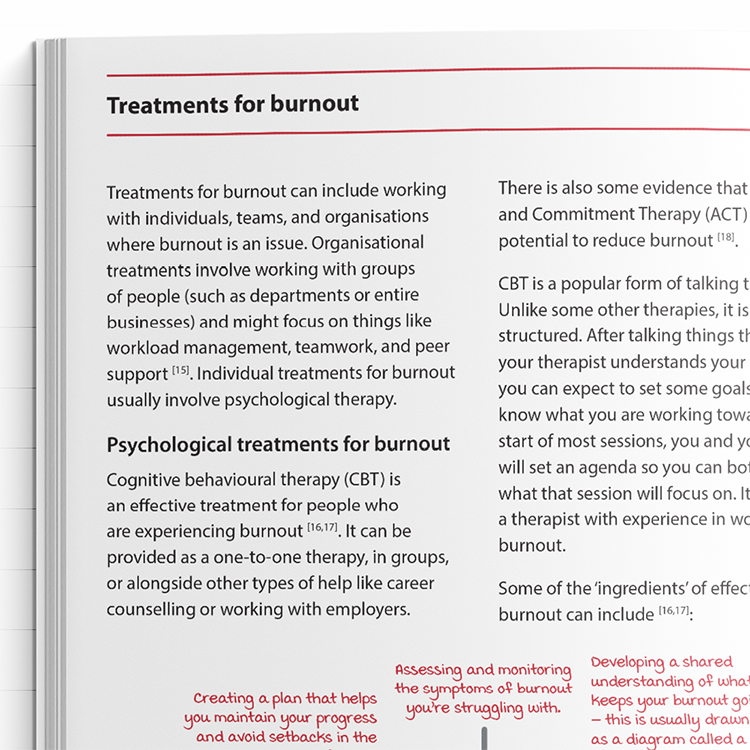Guide (PDF)
A psychoeducational guide. Typically containing elements of skills development.
An accessible and informative guide to understanding and addressing burnout, written specifically for clients.

A psychoeducational guide. Typically containing elements of skills development.
To use this feature you must be signed in to an active account on the Advanced or Complete plans.

Our ‘Understanding…’ series is a collection of psychoeducation guides for common mental health conditions. Friendly and explanatory, they are comprehensive sources of information for your clients. Concepts are explained in an easily digestible way, with plenty of case examples and accessible diagrams. Understanding Burnout is designed to help clients suffering from burnout to understand more about their condition.
This guide helps clients understand burnout. It explains what burnout is, what the common symptoms are, and effective ways to address it, such as cognitive behavioral therapy (CBT).
Clients experiencing emotional exhaustion, reduced personal efficacy, or depersonalization who are seeking to understand the causes and impact of burnout and begin recovery.
Identify clients who may be experiencing burnout.
Provide the guide to clients who could benefit from it.
Use the content to inform clients about burnout and help normalize their experiences.
Discuss the client's personal experience with burnout.
Plan treatment with the client or direct them to other sources of help and support.
Many people go through periods where they feel tired or unhappy at work. For many, it is a temporary response to pressure or fatigue. However, when someone begins to feel emotionally exhausted, disconnected from their work, or unable to function as they usually would, it may be a sign of burnout.
Burnout is a common and important issue that can affect people in almost any profession. Research suggests that around 18% of individuals in some countries report high levels of burnout, with many more at risk. Although it's typically associated with occupational stress, burnout can also emerge in other demanding settings, such as education, competitive sport, or caregiving roles. If it is not addressed, burnout can lead to significant difficulties, including problems with mental and physical health, reduced work performance, and broader impairments in daily functioning. Clients who have experienced burnout in the past may also worry about recurrence, particularly when returning to similar environments.
The good news is that burnout is treatable. It can be addressed at multiple levels - through individual-focused work, team-based strategies, or organizational change. Cognitive behavioural therapy (CBT) is one effective, evidence-based approach that can support clients in understanding and overcoming burnout, while building resilience to future episodes.

This site uses strictly necessary cookies to function. We do not use cookies for analytics, marketing, or tracking purposes. By clicking “OK”, you agree to the use of these essential cookies. Read our Cookie Policy